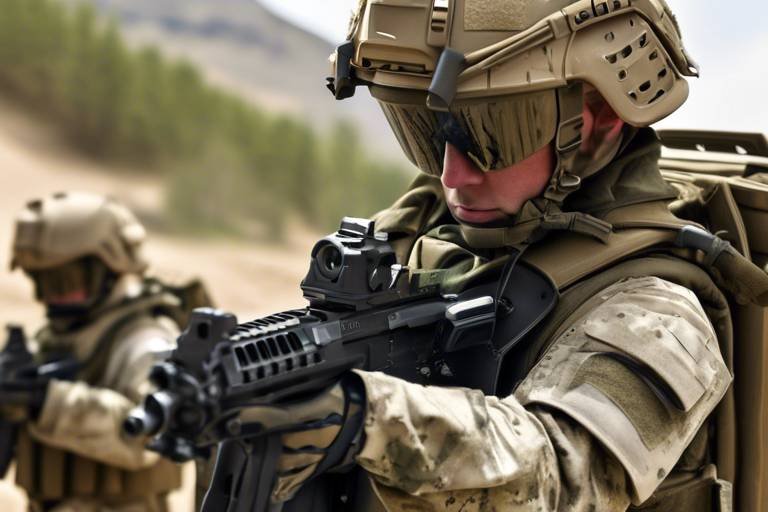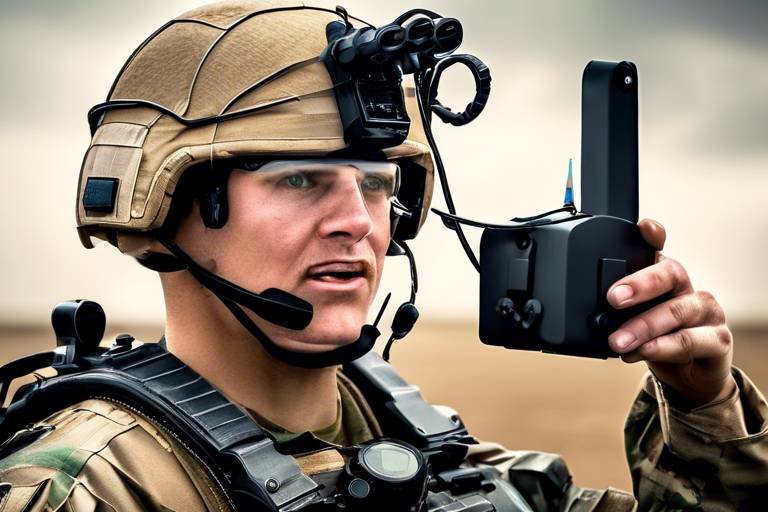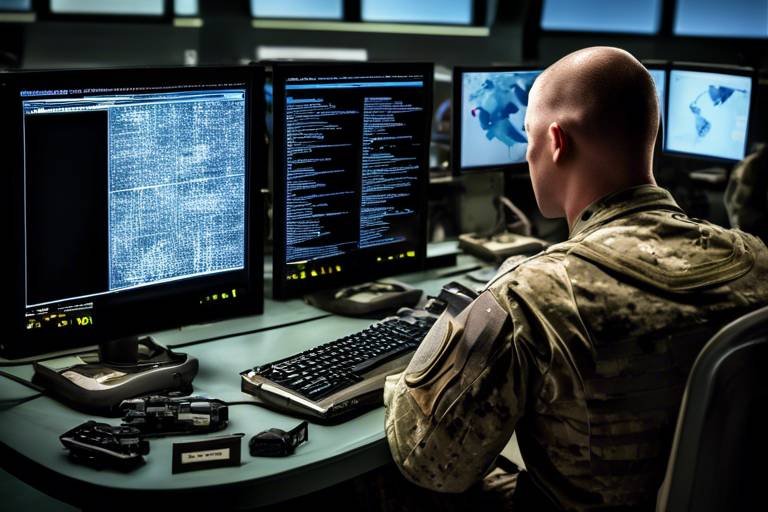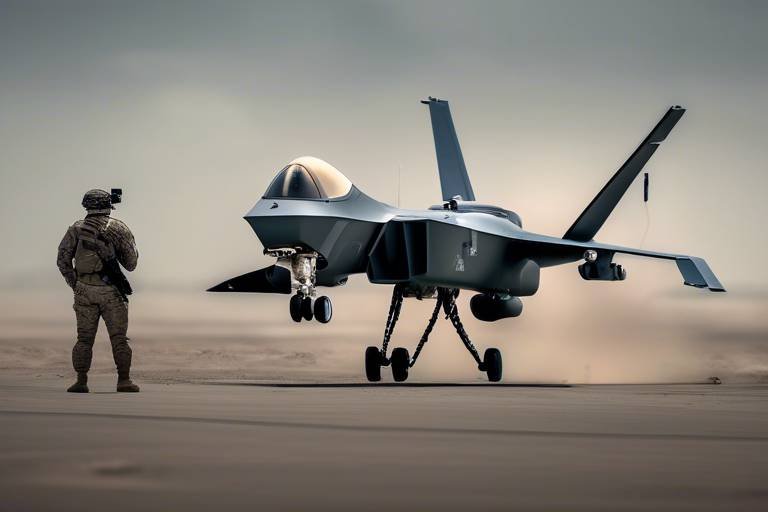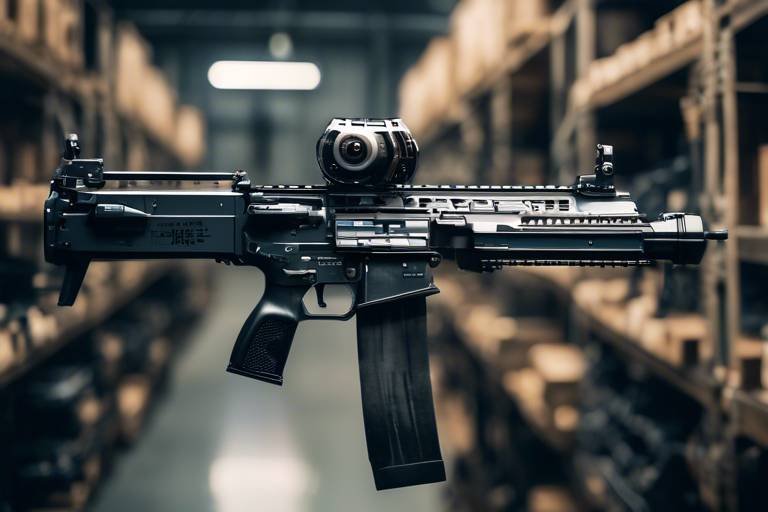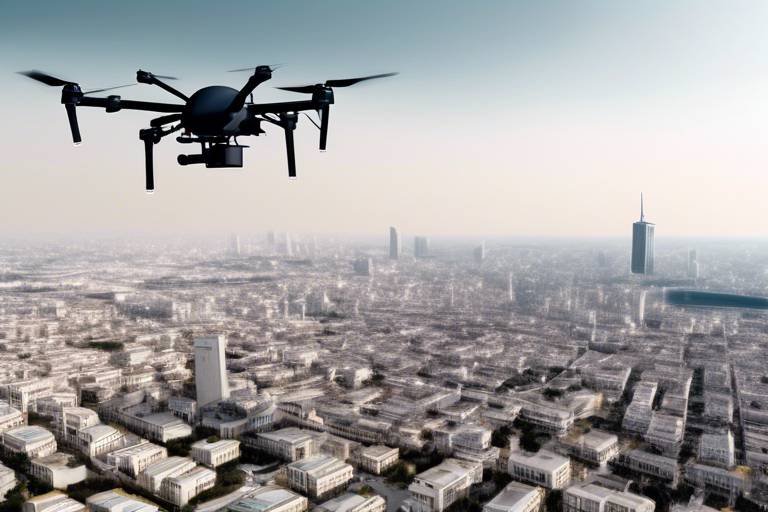The Role of AI in Tactical Ground Operations
In a world where the battlefield is continuously evolving, the integration of artificial intelligence (AI) into tactical ground operations marks a significant turning point. Imagine a scenario where decisions are made not just by human intuition but are backed by vast amounts of data, analyzed in real-time to enhance operational efficiency. This is not science fiction; it's the reality of modern warfare. AI is stepping in as a powerful ally, transforming how military operations are conducted and offering a glimpse into the future of combat.
As the military landscape becomes more complex, the need for rapid decision-making and precise execution is paramount. AI technologies are being harnessed to process enormous datasets, enabling commanders to make informed decisions faster than ever before. From surveillance and reconnaissance to logistics, AI is revolutionizing traditional military practices, making them more efficient and effective.
One of the most compelling aspects of AI in tactical operations is its ability to enhance situational awareness. Picture a battlefield where drones equipped with AI are constantly monitoring enemy movements, analyzing terrain, and predicting potential threats. This level of insight allows ground forces to react swiftly, adapting their strategies based on real-time intelligence. The implications are profound: fewer casualties, more successful missions, and a significant advantage over adversaries.
Moreover, AI's role in logistics cannot be understated. The military operates on a complex supply chain, and any disruption can have dire consequences. By employing AI-driven systems, military logistics can be streamlined, ensuring that troops receive the resources they need, exactly when they need them. This not only enhances operational readiness but also optimizes resource allocation, making every unit more effective.
As we delve deeper into the applications of AI in tactical operations, it's crucial to recognize both the benefits and the challenges that come with this technological advancement. While AI offers remarkable capabilities, it also raises ethical concerns and questions about data security. How do we ensure that these powerful tools are used responsibly? What measures are in place to protect sensitive information from cyber threats?
In summary, AI is not just a tool; it's a game changer in tactical ground operations. Its ability to enhance decision-making, improve situational awareness, and streamline logistics makes it an indispensable asset in modern military strategy. As we continue to explore the depths of AI's potential, the future of tactical operations looks not only efficient but also incredibly exciting.
- How does AI improve decision-making in military operations?
AI analyzes vast amounts of data quickly, providing commanders with insights that aid in making informed decisions on the battlefield. - What are the ethical concerns surrounding AI in military use?
There are concerns about autonomous weapons, unintended consequences in combat, and the moral implications of delegating critical decisions to machines. - How does AI enhance logistics in military operations?
AI streamlines supply chain management, ensuring timely delivery of resources and optimizing resource allocation for military units. - What role do drones play in AI-enhanced tactical operations?
Drones equipped with AI provide real-time surveillance and reconnaissance, improving situational awareness and operational effectiveness.

Understanding AI in Military Context
Artificial Intelligence (AI) is rapidly becoming a game changer in various sectors, and the military is no exception. In a world where the battlefield is constantly evolving, AI offers a transformative potential that can redefine how operations are conducted. But what exactly is AI? At its core, AI refers to the simulation of human intelligence processes by machines, particularly computer systems. This includes learning, reasoning, and self-correction. In military operations, AI can significantly enhance decision-making and operational efficiency, enabling forces to respond to threats more swiftly and accurately.
Imagine a scenario where military leaders can predict enemy movements with pinpoint accuracy. Sounds like something out of a sci-fi movie, right? But with AI, this is becoming a reality. The integration of AI into military strategies allows for a more informed decision-making process, which is crucial in high-stakes environments. By analyzing vast amounts of data from various sources, AI can provide insights that human analysts might overlook. This capability not only saves time but also enhances the effectiveness of tactical operations on the ground.
The relevance of AI in military contexts extends beyond mere data analysis. It plays a crucial role in enhancing situational awareness. For instance, AI algorithms can process real-time information from surveillance systems, drones, and other intelligence sources to give commanders a comprehensive view of the battlefield. This level of awareness is vital for making quick, informed decisions that could mean the difference between success and failure in combat situations.
Moreover, the adoption of AI technologies in military operations is not just about improving existing processes; it’s about revolutionizing them. AI can automate mundane tasks, allowing human personnel to focus on more complex challenges that require critical thinking and creativity. This shift can lead to a more agile and responsive military force, capable of adapting to dynamic combat environments.
However, the integration of AI into military operations isn’t without its challenges. Issues such as data security, ethical considerations, and the need for robust training programs for personnel must be addressed. Understanding these challenges is essential for the successful deployment of AI technologies in tactical operations. As we move forward, it’s crucial to strike a balance between leveraging AI's capabilities and ensuring that human oversight remains a fundamental aspect of military decision-making.
In summary, the role of AI in military contexts is multifaceted and profound. It offers unprecedented opportunities to enhance operational capabilities while also presenting new challenges that need careful consideration. As we continue to explore the potential of AI, one thing is clear: its impact on military operations will only grow, making it an indispensable tool in the modern battlefield.
- What is AI in the military context? AI refers to the simulation of human intelligence processes by machines, which can significantly enhance decision-making and operational efficiency in military operations.
- How does AI improve situational awareness? AI can analyze real-time data from various sources to provide commanders with a comprehensive view of the battlefield, enabling quicker and more informed decisions.
- What are the challenges of using AI in military operations? Key challenges include data security, ethical concerns regarding autonomous systems, and the need for proper training for personnel.
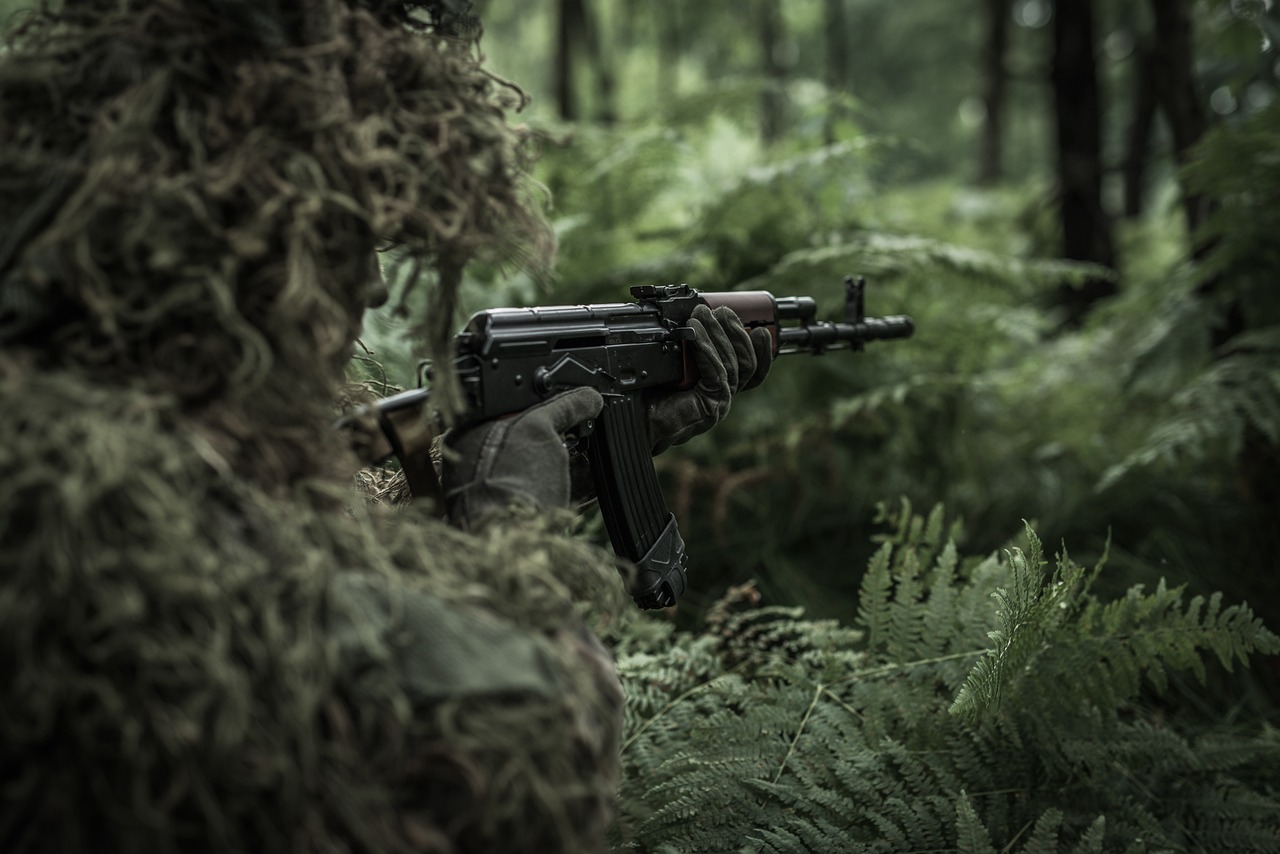
Applications of AI in Tactical Operations
In the rapidly evolving landscape of military operations, artificial intelligence (AI) is carving out a significant niche, particularly in tactical ground operations. The integration of AI technologies is not just a trend; it's a revolution that enhances the effectiveness and efficiency of military strategies. From surveillance to logistics, the applications of AI are manifold, each contributing to a more informed and responsive military force.
One of the most impactful applications of AI in tactical operations is in the realm of surveillance and reconnaissance. Traditional methods of gathering intelligence often involve extensive manpower and time. However, with AI, we can harness the power of advanced algorithms to analyze vast amounts of data in real-time. For instance, AI systems can process satellite images and drone footage, identifying potential threats or targets with remarkable precision. This capability not only speeds up the decision-making process but also reduces the risk to personnel by minimizing the need for human scouts in dangerous areas.
AI tools are revolutionizing how military forces conduct surveillance and reconnaissance missions. By employing machine learning techniques, these systems can detect patterns and anomalies that human analysts might overlook. Imagine a scenario where a military unit is deployed in a conflict zone. AI can continuously monitor the area, providing real-time updates and alerts about enemy movements or changes in the environment. This level of situational awareness is unprecedented and can significantly shift the tide of operations.
When we talk about AI in tactical operations, we can't overlook the role of drones. These unmanned aerial vehicles (UAVs) have become essential tools on the battlefield. Equipped with AI capabilities, drones can autonomously navigate complex terrains, recognize targets, and gather intelligence without direct human control. This integration not only enhances situational awareness but also allows ground forces to focus on their mission without being bogged down by the intricacies of data collection. For example, a drone can fly over a designated area, analyze the terrain, and relay critical information back to commanders, all while avoiding potential threats.
Another fascinating application of AI is in predictive analytics. This technology enables military leaders to anticipate enemy movements and optimize resource allocation. By analyzing historical data and current battlefield conditions, AI can forecast possible scenarios, allowing commanders to make informed decisions. Picture a chess game where AI predicts your opponent's next move based on their past strategies; that’s the kind of advantage predictive analytics offers in tactical planning. It empowers military units to stay one step ahead, minimizing surprise attacks and maximizing operational effectiveness.
Beyond the battlefield, AI is also making waves in logistics and supply chain management. Ensuring that troops have the right supplies at the right time is crucial for success in any military operation. AI can analyze patterns in supply usage, predict future needs, and streamline the logistics process. For instance, if a unit is engaged in prolonged combat, AI can forecast the necessary ammunition and medical supplies required, ensuring timely deliveries. This capability is akin to having a personal assistant who not only knows your schedule but also anticipates your needs before you even ask.
To illustrate the impact of AI on logistics, consider the following table that highlights key benefits:
| Benefit | Description |
|---|---|
| Efficiency | AI optimizes supply routes and delivery schedules, reducing delays. |
| Cost Reduction | Streamlined processes lead to lower operational costs. |
| Resource Allocation | Predictive analytics ensures that resources are used effectively. |
| Real-time Monitoring | AI systems provide up-to-date information on supply status. |
In summary, the applications of AI in tactical operations are diverse and impactful. From enhancing surveillance and reconnaissance to optimizing logistics, AI is reshaping how military forces operate. As we move forward, the integration of these technologies will likely continue to evolve, paving the way for more sophisticated and effective military strategies.
- What is the primary benefit of using AI in military operations? AI enhances decision-making and operational efficiency, allowing for quicker responses to threats.
- How does AI improve surveillance capabilities? AI can analyze large datasets quickly, identifying potential threats that human analysts might miss.
- What role do drones play in AI applications? Drones equipped with AI can autonomously gather intelligence and enhance situational awareness on the battlefield.
- Are there ethical concerns regarding AI in military operations? Yes, ethical considerations include the use of autonomous weapons and the potential for unintended consequences.

AI in Surveillance and Reconnaissance
In today's rapidly evolving battlefield, the integration of artificial intelligence (AI) into surveillance and reconnaissance operations is nothing short of revolutionary. Imagine being able to sift through mountains of data in mere seconds, identifying potential threats and gathering critical intelligence without the need for constant human oversight. This is the power of AI, and it’s changing the way military forces operate on the ground.
AI technologies, such as machine learning algorithms and advanced data analytics, are designed to process vast amounts of information from various sources, including satellite imagery, drone feeds, and ground sensors. This capability not only enhances the speed of decision-making but also significantly improves the accuracy of the intelligence gathered. For instance, AI can analyze patterns in data that might be invisible to the human eye, detecting anomalies that could indicate enemy movements or potential ambushes.
One of the most exciting applications of AI in this realm is in the deployment of drones. These unmanned aerial vehicles (UAVs) are now equipped with sophisticated AI systems that allow for autonomous flight and real-time data processing. Drones can cover large areas quickly, providing commanders with up-to-the-minute intelligence. Additionally, they can be programmed to recognize specific targets, making them invaluable for reconnaissance missions. The combination of drone technology and AI creates a powerful synergy that enhances situational awareness on the battlefield.
Furthermore, the use of AI in surveillance extends beyond just gathering information. Predictive analytics, powered by AI, allows military leaders to anticipate enemy actions based on historical data and current movements. This foresight enables them to optimize resource allocation and develop more effective tactical plans. For example, if AI systems detect a buildup of enemy forces in a particular area, military planners can adjust their strategies accordingly, potentially avoiding conflict or preparing for an engagement with a strategic advantage.
However, as with any technology, the implementation of AI in surveillance and reconnaissance isn’t without its challenges. Data security is a significant concern, as the information collected can be sensitive and vital to operational success. Protecting this data from cyber threats is paramount. Moreover, the reliance on AI can lead to questions about the reliability of the data being interpreted. Military personnel must be trained not only to operate these advanced systems but also to critically assess the information provided by AI.
In summary, the role of AI in surveillance and reconnaissance is transforming tactical operations in profound ways. By enhancing data processing capabilities, improving situational awareness, and enabling predictive analytics, AI is making military operations more effective and efficient. As technology continues to advance, we can expect even greater integration of AI in these critical areas, fundamentally reshaping how military forces approach their missions.
- How does AI improve surveillance capabilities? AI enhances surveillance by processing large volumes of data quickly, identifying patterns, and detecting threats that may not be visible to human analysts.
- What role do drones play in AI surveillance? Drones equipped with AI can autonomously gather and analyze data from the battlefield, providing real-time intelligence and enhancing situational awareness.
- What are the challenges of using AI in military operations? Challenges include data security concerns, the need for robust training programs for personnel, and ensuring the reliability of AI-generated intelligence.
- How can predictive analytics benefit military planning? Predictive analytics can inform military leaders about potential enemy movements, allowing for better resource allocation and tactical planning.

Drone Technology and AI Integration
In recent years, the integration of drone technology with artificial intelligence (AI) has revolutionized the landscape of tactical ground operations. Imagine a world where unmanned aerial vehicles (UAVs) can autonomously navigate through complex environments, identify potential threats, and relay critical information back to ground forces in real-time. This is not just science fiction; it's the reality of modern warfare. Drones equipped with AI capabilities are becoming essential tools for military operations, significantly enhancing situational awareness and operational effectiveness.
One of the most remarkable aspects of AI-integrated drones is their ability to process vast amounts of data quickly. Traditional reconnaissance methods often involve hours of manual analysis, but AI can sift through video feeds and sensor data in seconds, flagging anomalies and potential threats. This rapid analysis allows military personnel to make informed decisions faster, ultimately improving response times on the battlefield. For instance, during surveillance missions, drones can autonomously identify and track moving objects, providing ground commanders with a clear picture of enemy movements and intentions.
Autonomous Flight and Target Recognition are two key features of AI-enhanced drones. Autonomous flight capabilities mean that these drones can operate without constant human oversight, using pre-programmed flight paths or adapting in real-time to changing conditions. This is particularly useful in hostile environments where human pilots may be at risk. Furthermore, AI algorithms enable drones to recognize and categorize various targets, distinguishing between friend and foe with remarkable accuracy. This reduces the chances of friendly fire incidents and ensures that military resources are used effectively.
However, the integration of drone technology and AI is not without its challenges. Issues such as data security and the ethical implications of autonomous decision-making in combat scenarios are significant concerns. Military leaders must ensure that these systems are protected against cyber threats and that there are clear guidelines governing their use. The potential for drones to operate autonomously raises questions about accountability and the moral implications of allowing machines to make life-and-death decisions.
As we look to the future, the role of drones in tactical operations is expected to expand even further. With advancements in AI, we can anticipate more sophisticated systems that not only enhance surveillance and reconnaissance but also improve logistical support and battlefield communication. The potential applications are vast, and as technology continues to evolve, so too will the capabilities of military drones.
- What are the primary benefits of using AI in drone technology?
AI enhances the efficiency, accuracy, and speed of data analysis, allowing for better decision-making in tactical operations. - How do drones improve situational awareness on the battlefield?
Drones provide real-time aerial surveillance, offering commanders a comprehensive view of the battlefield and enabling quicker responses to threats. - What are the ethical concerns surrounding autonomous drones?
Key concerns include accountability for decisions made by AI, the potential for unintended consequences, and the implications of using drones in combat. - How does AI help in target recognition?
AI algorithms can analyze visual data to distinguish between different objects, enhancing the accuracy of identifying threats and reducing the risk of friendly fire.
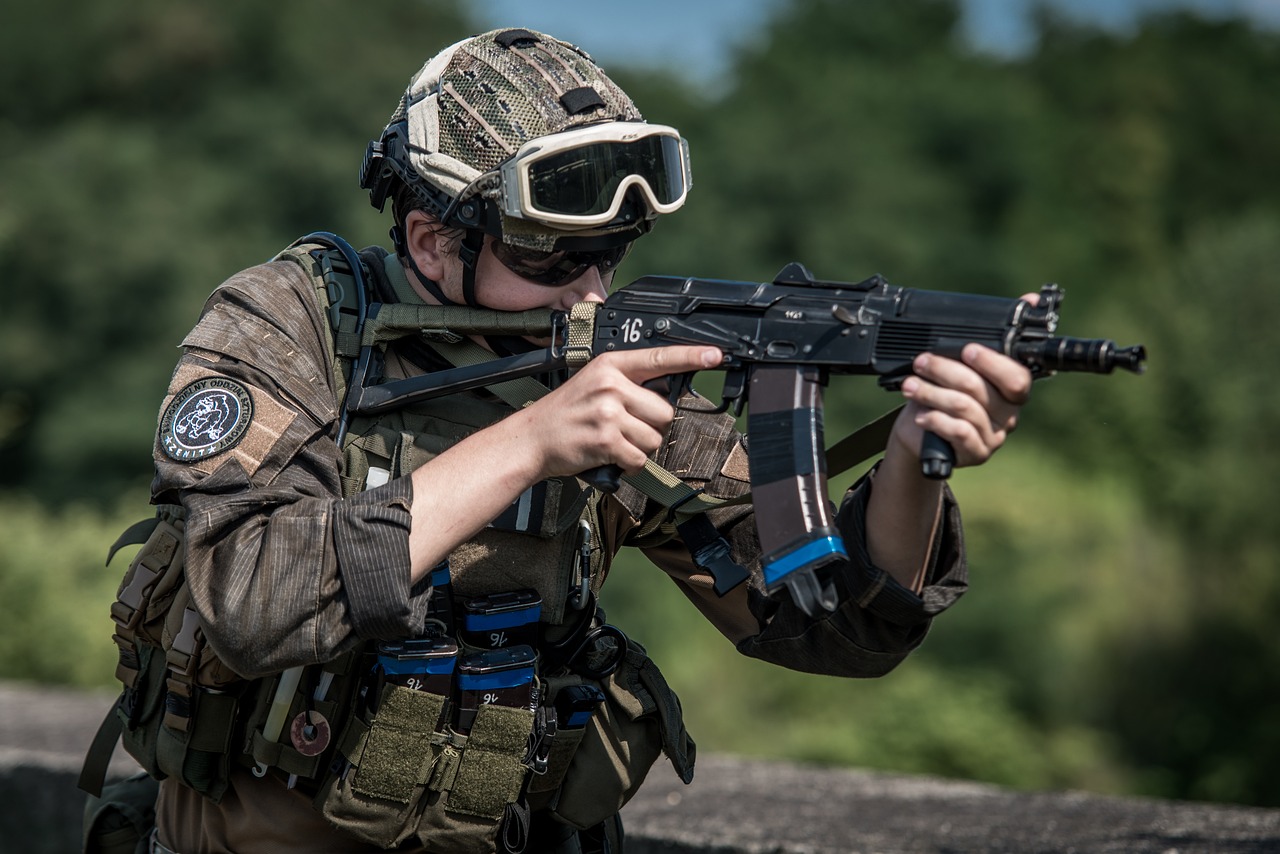
Predictive Analytics for Tactical Planning
In the fast-paced world of military operations, where every second counts, predictive analytics has emerged as a game-changer for tactical planning. Imagine being able to foresee potential enemy movements and adapt your strategies accordingly—this isn't science fiction; it's the power of AI at work. By leveraging vast amounts of historical data and real-time information, predictive analytics can help military leaders make informed decisions with a level of precision that was previously unimaginable.
At its core, predictive analytics involves using statistical algorithms and machine learning techniques to analyze data and predict future outcomes. In a military context, this means assessing patterns from past engagements, troop movements, and even environmental factors to forecast how an operation might unfold. For example, consider the unpredictability of weather conditions during a mission. With predictive analytics, commanders can simulate various scenarios, adjusting their plans to mitigate risks associated with adverse weather, thus enhancing operational success.
One of the most significant advantages of using predictive analytics in tactical planning is its ability to optimize resource allocation. By anticipating where and when resources will be needed, military units can ensure that supplies, personnel, and equipment are positioned effectively. This proactive approach not only saves time and money but also increases the chances of mission success. For instance, if predictive models indicate a high likelihood of enemy engagement in a specific area, commanders can preemptively deploy reinforcements or stockpile supplies nearby.
Moreover, predictive analytics can facilitate collaborative planning among different branches of the military. By sharing insights and forecasts, various units can synchronize their efforts, leading to a more cohesive and effective operational strategy. This collaboration can be visualized through advanced data dashboards that present real-time analytics, allowing commanders to make quick, informed decisions based on the latest information.
However, while the benefits of predictive analytics are clear, there are challenges that must be addressed. Data accuracy is paramount; if the input data is flawed, the predictions will be, too. This necessitates robust data collection and validation processes to ensure that the analytics are based on reliable information. Additionally, the integration of predictive analytics into existing military frameworks requires training personnel to interpret and act on the insights provided effectively.
In conclusion, the integration of predictive analytics into tactical planning represents a significant leap forward for military operations. By harnessing the power of AI, military leaders can enhance their decision-making capabilities, optimize resources, and ultimately improve the effectiveness of their operations. As technology continues to evolve, the potential for predictive analytics in the military will only grow, paving the way for smarter, more agile tactical strategies.
- What is predictive analytics?
Predictive analytics is the use of statistical algorithms and machine learning techniques to analyze historical data and predict future outcomes.
- How does predictive analytics benefit military operations?
It enhances decision-making by forecasting potential scenarios, optimizing resource allocation, and improving collaborative planning among military units.
- What challenges are associated with implementing predictive analytics?
Challenges include ensuring data accuracy, training personnel, and integrating analytics into existing military frameworks.
- Can predictive analytics adapt to real-time data?
Yes, predictive analytics can process real-time data to provide up-to-date insights and forecasts, allowing for swift adjustments in tactical planning.

AI in Logistics and Supply Chain Management
In the realm of military operations, effective logistics and supply chain management are as crucial as the strategies employed on the battlefield. The integration of artificial intelligence (AI) into these areas has revolutionized how military forces manage resources, ensuring that troops are equipped with the necessary supplies at the right time and place. Imagine a well-oiled machine where every cog is perfectly synchronized; that’s the power of AI in logistics.
AI technologies can analyze vast amounts of data in real-time, allowing military leaders to make informed decisions about supply routes, inventory levels, and resource allocation. For instance, predictive analytics can forecast demand based on historical data and current conditions, helping to avoid shortages or excesses. This proactive approach not only enhances operational efficiency but also significantly reduces costs. In fact, studies have shown that AI can cut logistics costs by up to 30% in some scenarios.
Moreover, AI enhances the visibility of supply chains. With AI-powered tracking systems, military units can monitor the status of supplies and equipment anywhere in the world. This real-time visibility allows for swift adjustments in logistics plans, ensuring that any potential disruptions are addressed before they escalate into larger issues. For example, if a supply truck encounters unexpected delays, AI can quickly reroute other vehicles to compensate for the lost time, maintaining the flow of essential resources.
However, the advantages of AI in logistics extend beyond just efficiency and cost savings. By automating routine tasks such as inventory management and order processing, personnel can focus on more strategic aspects of their roles, ultimately leading to improved operational effectiveness. AI systems can also help identify patterns and trends in supply chain operations, enabling military leaders to optimize their logistics strategies continuously. This dynamic adaptability is critical in the fast-paced environment of military operations.
To illustrate the impact of AI in logistics, consider the following table that outlines various applications:
| Application | Description | Benefits |
|---|---|---|
| Predictive Analytics | Forecasting demand and supply needs | Reduces shortages and optimizes inventory |
| Automated Inventory Management | Real-time tracking of supplies and equipment | Enhances resource visibility and accountability |
| Route Optimization | AI algorithms determine the best supply routes | Minimizes delays and transportation costs |
| Data Analysis | Identifying patterns in logistics operations | Informs strategic decision-making |
Despite these advancements, there are still challenges to overcome in implementing AI within logistics and supply chain management. Issues such as data integration, the need for robust training programs for personnel, and the potential for over-reliance on technology must be addressed to fully harness the benefits of AI. As military operations evolve, so too must the strategies and technologies used to support them.
In conclusion, the role of AI in logistics and supply chain management is not just a fleeting trend; it's a fundamental shift that enhances the effectiveness and efficiency of military operations. By embracing these technologies, military forces can ensure they remain agile and responsive in an ever-changing operational landscape.
- What are the main benefits of using AI in military logistics? AI enhances efficiency, reduces costs, and improves resource visibility, making it easier to manage supplies effectively.
- How does AI improve decision-making in logistics? AI analyzes vast amounts of data to provide actionable insights, allowing military leaders to make informed decisions quickly.
- What challenges does the military face in implementing AI? Challenges include data integration, the need for personnel training, and concerns about over-reliance on technology.

Challenges of Implementing AI in Tactical Operations
As we dive into the realm of artificial intelligence in tactical operations, it's crucial to acknowledge that while AI holds immense promise, it also brings along a host of challenges that can complicate its implementation. The military landscape is unique, and the integration of AI technologies must navigate a complex web of ethical, operational, and technological hurdles. One of the most pressing issues is the ethical implications surrounding AI deployment. The prospect of autonomous weapons raises significant questions: Should machines be allowed to make life-and-death decisions? What happens when an AI system miscalculates a threat? These questions are not merely academic; they reflect real concerns about accountability and the potential for unintended consequences in combat scenarios.
Furthermore, the integration of AI into military operations demands a robust framework for training personnel. The operators and decision-makers need to understand not just how to use AI tools, but also the underlying algorithms that drive them. Without proper training, there's a risk of over-reliance on technology, which can lead to operational failures. Additionally, the rapid pace of AI development means that military personnel must continually update their skills, creating a constant need for education and adaptation.
Another significant challenge lies in data security and privacy issues. AI systems require vast amounts of data to function effectively, and this data can be a double-edged sword. On one hand, it enhances the capabilities of AI tools; on the other hand, it poses serious risks. Data breaches can lead to the exposure of sensitive military information, potentially compromising missions and endangering lives. Thus, it is imperative for military organizations to implement stringent cybersecurity measures to protect their data assets. The table below summarizes some common risks associated with data security in AI applications:
| Risk | Description |
|---|---|
| Data Breaches | Unauthorized access to sensitive military data, leading to potential operational compromises. |
| Data Manipulation | Malicious alteration of data that can mislead AI systems, resulting in incorrect decision-making. |
| Privacy Violations | Infringement on the privacy of individuals involved in military operations due to data collection practices. |
Moreover, the interoperability of AI systems with existing military technologies presents another challenge. Many military operations rely on a patchwork of legacy systems that may not be compatible with modern AI solutions. This lack of integration can lead to inefficiencies and operational delays. The military must invest in both technology upgrades and the development of new protocols to ensure that AI can be seamlessly integrated into their operations.
In summary, while the potential benefits of AI in tactical operations are substantial, the challenges of ethical considerations, training requirements, data security, and system interoperability cannot be overlooked. Addressing these issues head-on will be essential for the successful adoption of AI in military contexts. As we look to the future, it is imperative that military leaders, technologists, and ethicists work together to create a framework that not only harnesses the power of AI but does so in a responsible and effective manner.
- What are the main ethical concerns regarding AI in military operations? The primary concerns include the potential for autonomous weapons to make life-and-death decisions and the accountability for mistakes made by AI systems.
- How can military personnel be trained to use AI effectively? Training programs should focus on understanding AI algorithms, operational protocols, and the ethical implications of AI use in combat scenarios.
- What steps can be taken to enhance data security in AI applications? Implementing stringent cybersecurity measures, regular audits, and staff training on data protection can help mitigate risks.
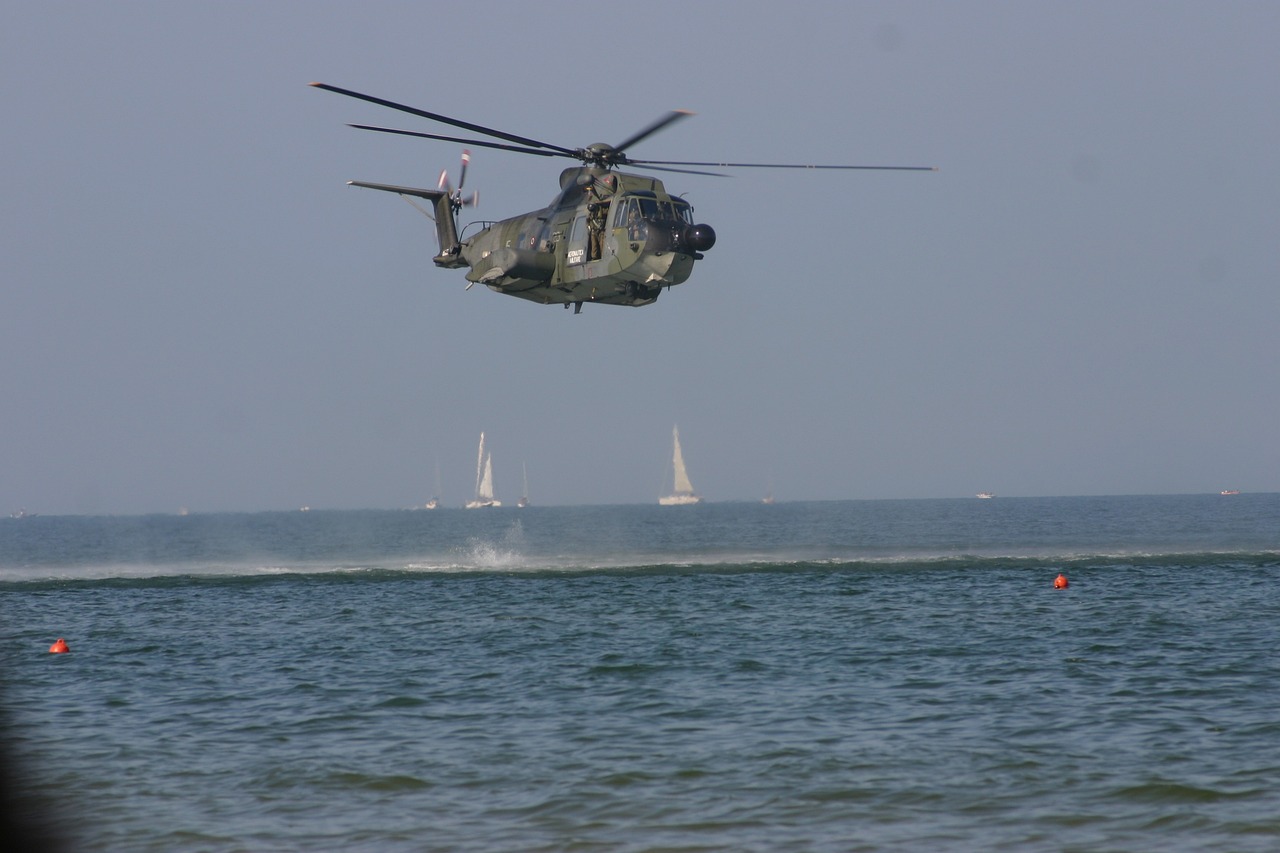
Ethical Considerations in AI Deployment
The integration of artificial intelligence (AI) into tactical ground operations is not just a technological advancement; it brings with it a myriad of ethical considerations that military leaders and policymakers must navigate. As we embrace the potential of AI to enhance operational efficiency, we must also confront the moral dilemmas that arise when machines are entrusted with life-and-death decisions. This is particularly pressing in the realm of autonomous weapons systems, which can engage targets without direct human intervention. The very notion of machines making such critical decisions raises profound questions about accountability and the value of human life.
Imagine a scenario where an AI system misidentifies a civilian as a combatant due to a programming error or a lack of contextual understanding. The consequences could be catastrophic, resulting in loss of innocent lives and a potential escalation of conflict. This underscores the need for stringent ethical guidelines in the deployment of AI technologies. Military organizations must establish frameworks that ensure AI systems are designed with a clear understanding of human oversight and accountability. The challenge lies in balancing the speed and efficiency of AI with the ethical responsibility of human decision-making.
Furthermore, there is the issue of transparency. Many AI systems operate as "black boxes," where the decision-making processes are not fully understood—even by their developers. This lack of transparency can lead to a distrust of AI systems among military personnel and the general public. To mitigate this, it is essential to develop AI technologies that provide clear insights into their decision-making criteria. This can be achieved through robust testing and validation processes, ensuring that AI systems are both effective and ethically sound.
In addition to operational ethics, we must also consider the broader societal implications of deploying AI in military contexts. The normalization of AI in warfare could lead to an arms race in autonomous weapons technology, prompting other nations to develop similar capabilities. This escalation could destabilize global security and lead to unintended conflicts. Thus, international agreements and regulations must be established to govern the use of AI in military operations, ensuring that its deployment is aligned with humanitarian laws and ethical standards.
As we look to the future, the ethical considerations surrounding AI deployment in tactical operations will only grow in complexity. It is crucial for military leaders, ethicists, and technologists to engage in ongoing dialogue about these issues. By fostering a culture of ethical awareness and responsibility, we can harness the power of AI while safeguarding the values that underpin our society.
- What are the main ethical concerns regarding AI in military operations?
Key concerns include accountability for decisions made by autonomous systems, the potential for civilian casualties, and the transparency of AI decision-making processes.
- How can military organizations ensure ethical AI deployment?
By establishing clear ethical guidelines, ensuring human oversight, and promoting transparency in AI systems.
- What role does international law play in AI deployment?
International law provides a framework for the ethical use of AI in warfare, ensuring compliance with humanitarian standards and preventing an arms race in autonomous weapons.

Data Security and Privacy Issues
In the rapidly evolving landscape of military operations, the integration of artificial intelligence (AI) brings with it a myriad of data security and privacy challenges that cannot be overlooked. As AI systems become more prevalent in tactical ground operations, the amount of sensitive information being processed and analyzed increases exponentially. This surge in data collection raises significant concerns regarding the security of classified information and the potential for unauthorized access or breaches.
One of the primary issues surrounding data security in AI applications is the risk of cyberattacks. Military systems that rely on AI for decision-making are often interconnected, making them vulnerable to hackers who may seek to exploit these connections. A successful breach could not only compromise sensitive operational details but also lead to catastrophic consequences on the battlefield. For instance, if an adversary were to gain access to predictive analytics systems, they could anticipate military movements and strategies, thereby undermining the element of surprise.
Moreover, the privacy of personnel is a critical concern. AI systems often require vast amounts of data, including personal information about military personnel. The collection and storage of this data necessitate stringent security measures to prevent unauthorized access and ensure compliance with privacy regulations. The potential for misuse of personal data poses ethical dilemmas that military leaders must navigate carefully.
To address these challenges, it is essential for military organizations to implement robust cybersecurity measures. This includes:
- Encryption: Utilizing strong encryption protocols to protect sensitive data both in transit and at rest.
- Access Controls: Establishing strict access controls to ensure that only authorized personnel can access critical systems and data.
- Regular Audits: Conducting frequent security audits to identify vulnerabilities and rectify them before they can be exploited.
- Training Programs: Implementing comprehensive training programs for personnel to recognize and respond to potential security threats.
Additionally, the military must foster a culture of cyber awareness among its ranks. This means not only equipping personnel with the necessary tools and knowledge but also encouraging them to remain vigilant against potential threats. By promoting a proactive approach to cybersecurity, military organizations can mitigate risks associated with AI deployment.
As AI continues to shape the future of tactical ground operations, addressing data security and privacy issues will be paramount. The military must remain agile and adaptive, continually evolving its strategies to protect sensitive information while leveraging the advantages that AI can provide. The balance between operational effectiveness and data security is delicate, but with the right measures in place, it is achievable.
- What are the main data security risks associated with AI in military operations?
The main risks include cyberattacks on interconnected systems, unauthorized access to sensitive information, and potential breaches of personnel privacy. - How can military organizations protect sensitive data?
By implementing strong encryption, access controls, regular security audits, and comprehensive training programs for personnel. - Why is personnel privacy a concern in AI applications?
AI systems often require personal data for analysis, which raises ethical and security concerns about unauthorized access and misuse of this information.

The Future of AI in Tactical Ground Operations
The future of artificial intelligence (AI) in tactical ground operations is brimming with potential, promising to reshape the battlefield in ways we can only begin to imagine. As technology continues to advance at a breakneck pace, military strategists are increasingly looking towards AI to enhance their capabilities and effectiveness. Imagine a world where decisions are made not just by human intuition but also by sophisticated algorithms that analyze data in real time, predicting outcomes with uncanny accuracy. This is not science fiction; it's the reality that is unfolding before our eyes.
One of the most exciting prospects of AI in military operations is its ability to integrate seamlessly with existing technologies. This integration can lead to the development of smart systems that can operate autonomously or assist human operators in making critical decisions. For instance, consider the use of AI-driven command and control systems that can analyze battlefield data, assess threats, and suggest optimal courses of action. These systems can process vast amounts of information far quicker than any human could, allowing military leaders to stay one step ahead of their adversaries.
Furthermore, the future holds promise for enhanced collaboration between AI and human forces. As we move forward, the synergy between human intuition and AI's analytical prowess will likely create a more effective combat force. The key will be to ensure that AI systems are designed to complement rather than replace human decision-making. This partnership could lead to the development of hybrid teams where human soldiers and AI systems work together to achieve mission objectives, leveraging each other's strengths.
However, the road ahead is not without challenges. As we embrace AI in tactical operations, we must also navigate the ethical landscape that accompanies its deployment. Questions surrounding accountability, especially in the context of autonomous weapons, will need to be addressed. What happens if an AI system makes a mistake? Who is responsible? These are critical discussions that must take place to ensure that the integration of AI is done responsibly and ethically.
Moreover, the future of AI in tactical ground operations will also hinge on advancements in cybersecurity. As military operations become increasingly reliant on AI, the importance of protecting sensitive data from cyber threats cannot be overstated. Ensuring the integrity and security of AI systems will be paramount, as any breach could have catastrophic consequences on the battlefield. Future military strategies will need to incorporate robust cybersecurity measures to safeguard against these risks.
In terms of technological advancements, we can expect to see improvements in areas such as machine learning and natural language processing, which will enhance AI's ability to interact with human operators more intuitively. Imagine a scenario where a soldier can communicate with an AI system using natural language, receiving real-time updates and suggestions based on the current battlefield situation. This level of interaction could revolutionize how military personnel operate in high-stress environments.
As we look to the future, the potential for AI in tactical ground operations is vast. From predictive analytics that can foresee enemy movements to intelligent logistics systems that ensure resources are delivered where they are needed most, the possibilities are endless. Ultimately, the integration of AI into military operations will not only enhance combat effectiveness but also redefine the very nature of warfare itself.
- What are the main benefits of AI in tactical ground operations?
AI enhances decision-making, improves operational efficiency, and provides real-time intelligence, allowing military forces to respond more effectively to threats.
- How does AI impact the role of human soldiers?
AI is designed to complement human decision-making, creating hybrid teams where soldiers and AI systems collaborate to achieve mission objectives.
- What ethical concerns are associated with AI in military operations?
Concerns include accountability for autonomous actions, the potential for unintended consequences, and the moral implications of using AI in combat scenarios.
- How important is cybersecurity for AI in military operations?
Cybersecurity is crucial as AI systems can be vulnerable to breaches, which could compromise sensitive data and operational integrity.
Frequently Asked Questions
- What is the role of AI in tactical ground operations?
AI plays a transformative role in tactical ground operations by enhancing decision-making, improving operational efficiency, and providing real-time intelligence. It integrates advanced technologies into military strategies, allowing for better situational awareness and resource allocation.
- How is AI used in surveillance and reconnaissance?
AI is utilized in surveillance and reconnaissance through tools that can analyze large datasets, detect potential threats, and provide actionable intelligence. This capability allows military forces to stay one step ahead of adversaries, making informed decisions based on real-time data.
- What are the benefits of using drones with AI in military operations?
Drones equipped with AI enhance operational effectiveness by enabling autonomous flight, target recognition, and data collection. This technology allows for greater situational awareness, reduces risks to personnel, and improves mission outcomes.
- What challenges does AI face in military applications?
Integrating AI into military operations comes with challenges such as ethical concerns regarding autonomous weapons, data security risks, and the need for comprehensive training programs for personnel to effectively use these technologies.
- How does predictive analytics improve tactical planning?
Predictive analytics powered by AI helps military leaders anticipate enemy movements and optimize resource allocation. By analyzing historical data and current trends, AI can provide insights that enhance strategic decision-making on the battlefield.
- What ethical considerations arise from using AI in combat?
Ethical considerations include the potential for unintended consequences when deploying autonomous weapons, the need for accountability in AI decision-making, and the broader implications of reducing human oversight in critical military operations.
- Why is data security important in AI military applications?
Data security is crucial in military AI applications to protect sensitive information from breaches that could compromise operations. Ensuring robust cybersecurity measures is essential to maintain the integrity and confidentiality of military data.
- What does the future hold for AI in tactical ground operations?
The future of AI in tactical ground operations looks promising, with advancements in technology expected to enhance combat effectiveness and strategic capabilities. As AI continues to evolve, it will likely play an even more integral role in shaping military strategies and operations.





